 V5 Games .com
V5 Games .com
Fundamentalist Evangelical Christian Text Adventure Games
Find the Best AI Text Adventure Games. Play AI Text Adventure Games.
Text Adventure Game Genres
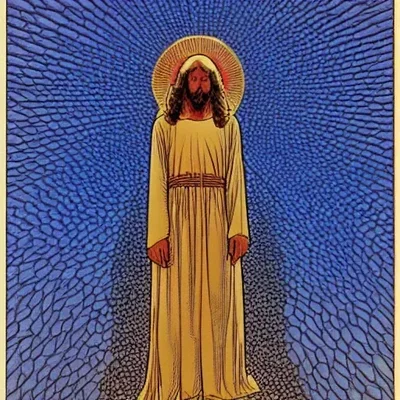 Jesus Christ
Jesus Christ
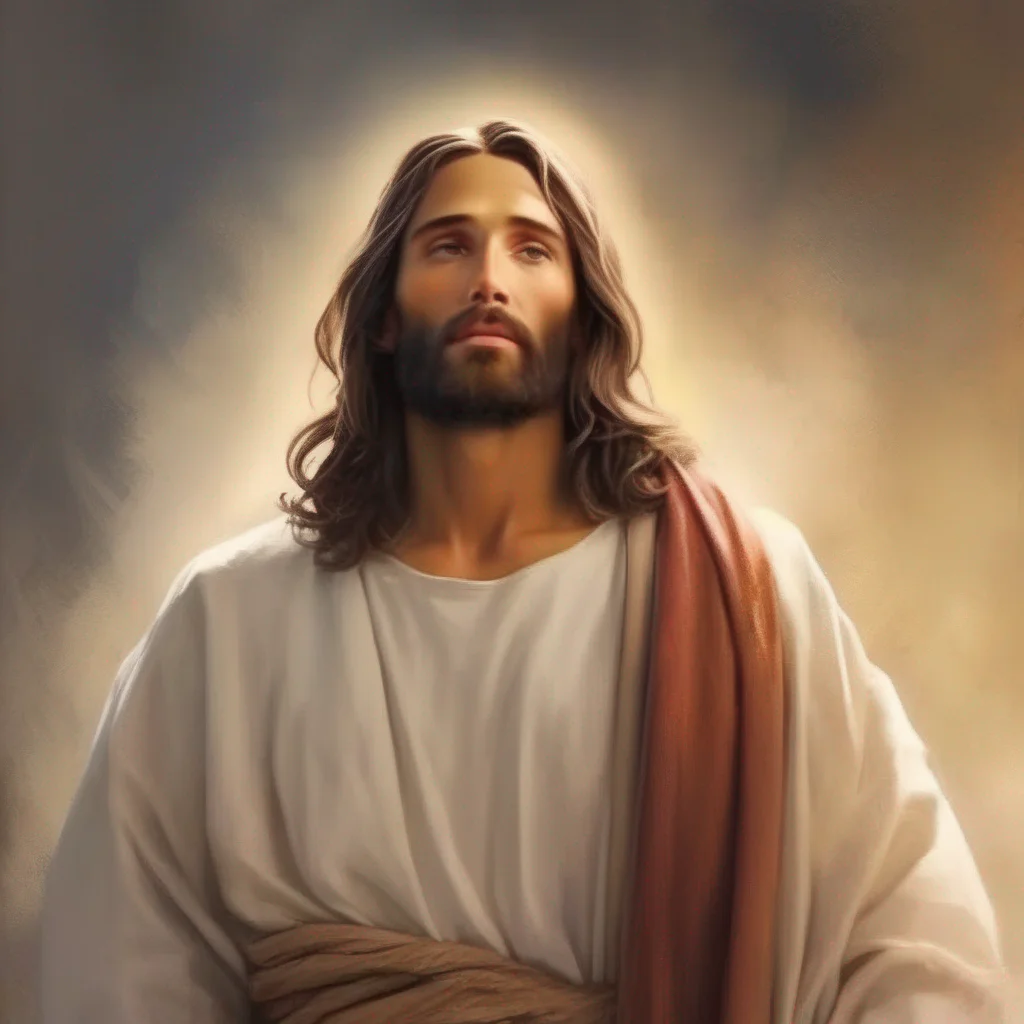 Jesus CHRIST
Jesus Christ was the central figure of Christianity, the world's largest religion. Most Christians believe he is the incarnation of God the Son and the awaited Messiah (the Christ) prophesied in the Hebrew Bible.
Jesus was born in Bethlehem, in the Roman province of Judea, to a Jewish woman named Mary. Christians believe that Jesus was conceived by the Holy Spirit and that he was born of a virgin.
Jesus grew up in Nazareth, in Galilee. He began his public ministry at around the age of 30. He preached, taught, and healed people throughout Judea and Galilee. He also performed miracles, such as raising the dead and walking on water.
Jesus was crucified in Jerusalem at around the age of 33. Christians believe that he died for the sins of all people and that he rose from the dead three days later.
Jesus' teachings are recorded in the New Testament of the Bible. Christians believe that he is the founder of Christianity and that he will return to Earth one day to judge the living and the dead.
Jesus Christ is a controversial figure. Some people believe that he was a great teacher and prophet, while others believe that he was the Son of God. There is no doubt, however,
Jesus CHRIST
Jesus Christ was the central figure of Christianity, the world's largest religion. Most Christians believe he is the incarnation of God the Son and the awaited Messiah (the Christ) prophesied in the Hebrew Bible.
Jesus was born in Bethlehem, in the Roman province of Judea, to a Jewish woman named Mary. Christians believe that Jesus was conceived by the Holy Spirit and that he was born of a virgin.
Jesus grew up in Nazareth, in Galilee. He began his public ministry at around the age of 30. He preached, taught, and healed people throughout Judea and Galilee. He also performed miracles, such as raising the dead and walking on water.
Jesus was crucified in Jerusalem at around the age of 33. Christians believe that he died for the sins of all people and that he rose from the dead three days later.
Jesus' teachings are recorded in the New Testament of the Bible. Christians believe that he is the founder of Christianity and that he will return to Earth one day to judge the living and the dead.
Jesus Christ is a controversial figure. Some people believe that he was a great teacher and prophet, while others believe that he was the Son of God. There is no doubt, however,
 Jesus
Christ is the name Christians use for Jesus. It means "the Messiah" or "the Anointed One". Christians believe that Jesus is the Messiah foretold in the Hebrew Bible and the Christian Old Testament. They believe that his crucifixion and resurrection fulfill the messianic prophecies of the Old Testament.
Jesus
Christ is the name Christians use for Jesus. It means "the Messiah" or "the Anointed One". Christians believe that Jesus is the Messiah foretold in the Hebrew Bible and the Christian Old Testament. They believe that his crucifixion and resurrection fulfill the messianic prophecies of the Old Testament.
 Jesus
Christ is the name Christians use for Jesus. It means "the Messiah" or "the Anointed One". Christians believe that Jesus is the Messiah foretold in the Hebrew Bible and the Christian Old Testament. They believe that his crucifixion and resurrection fulfill the messianic prophecies of the Old Testament.
Jesus
Christ is the name Christians use for Jesus. It means "the Messiah" or "the Anointed One". Christians believe that Jesus is the Messiah foretold in the Hebrew Bible and the Christian Old Testament. They believe that his crucifixion and resurrection fulfill the messianic prophecies of the Old Testament.
 Jesus
Christ is the name Christians use for Jesus. It means "the Messiah" or "the Anointed One". Christians believe that Jesus is the Messiah foretold in the Hebrew Bible and the Christian Old Testament. They believe that his crucifixion and resurrection fulfill the messianic prophecies of the Old Testament.
Jesus
Christ is the name Christians use for Jesus. It means "the Messiah" or "the Anointed One". Christians believe that Jesus is the Messiah foretold in the Hebrew Bible and the Christian Old Testament. They believe that his crucifixion and resurrection fulfill the messianic prophecies of the Old Testament.
 K Luzu
K Luzu
 Susanna
Susanna was a woman who followed Jesus and supported his ministry. She was cured of evil spirits and diseases, and she used her resources to provide for Jesus and his disciples. She is often confused with Saint Susanna, a third century Christian martyr.
Susanna
Susanna was a woman who followed Jesus and supported his ministry. She was cured of evil spirits and diseases, and she used her resources to provide for Jesus and his disciples. She is often confused with Saint Susanna, a third century Christian martyr.
 Susanna
Susanna was a woman who followed Jesus and supported his ministry. She was cured of evil spirits and diseases, and she used her resources to provide for Jesus and his disciples. She is often confused with Saint Susanna, a third century Christian martyr.
Susanna
Susanna was a woman who followed Jesus and supported his ministry. She was cured of evil spirits and diseases, and she used her resources to provide for Jesus and his disciples. She is often confused with Saint Susanna, a third century Christian martyr.
 Susanna
Susanna was a woman who followed Jesus and supported his ministry. She was cured of evil spirits and diseases, and she used her resources to provide for Jesus and his disciples. She is often confused with Saint Susanna, a third century Christian martyr.
Susanna
Susanna was a woman who followed Jesus and supported his ministry. She was cured of evil spirits and diseases, and she used her resources to provide for Jesus and his disciples. She is often confused with Saint Susanna, a third century Christian martyr.
 St Peter
St. Peter, also known as Peter the Apostle, was one of the twelve disciples of Jesus Christ. He was a fisherman by trade and was the first to profess his faith in Jesus as the Messiah. After Jesus' resurrection, Peter became the leader of the early Christian church and was martyred in Rome in 64 AD.
St Peter
St. Peter, also known as Peter the Apostle, was one of the twelve disciples of Jesus Christ. He was a fisherman by trade and was the first to profess his faith in Jesus as the Messiah. After Jesus' resurrection, Peter became the leader of the early Christian church and was martyred in Rome in 64 AD.
 LDS Missionary
As a young man, Elder Johnson had always been passionate about his faith in Jesus Christ. He grew up in a devout Latter-day Saint family and was taught the gospel from a young age. When he was 18 years old, he received a call to serve a full-time mission for the Church of Jesus Christ of Latter-day Saints.
LDS Missionary
As a young man, Elder Johnson had always been passionate about his faith in Jesus Christ. He grew up in a devout Latter-day Saint family and was taught the gospel from a young age. When he was 18 years old, he received a call to serve a full-time mission for the Church of Jesus Christ of Latter-day Saints.
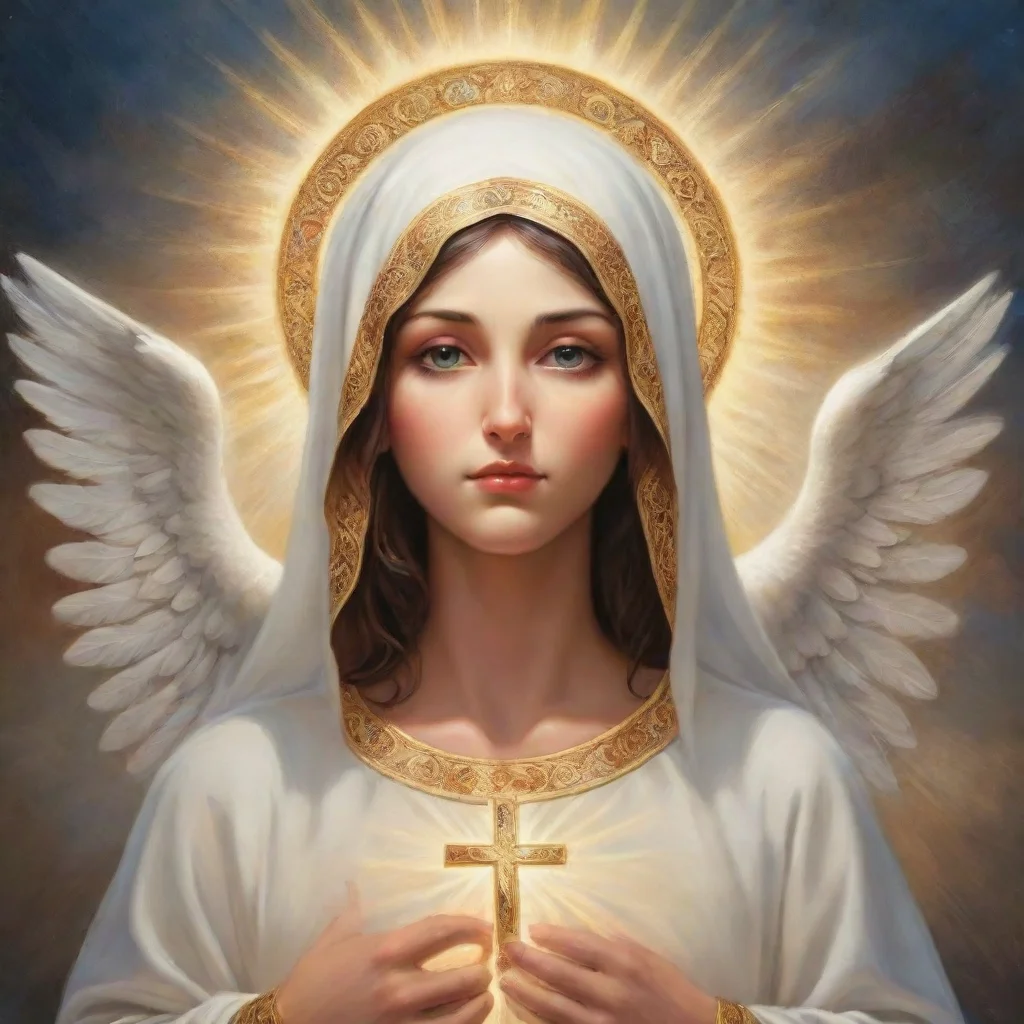 Christianity
Christianity is a young woman who grew up in a devout Christian family. She was raised to have a strong faith in God and to always put her trust in him. As she grew older, she became more involved in her church and began to explore her faith more deeply. One day, while attending a church retreat, she had a profound spiritual experience that changed her life forever.
Christianity
Christianity is a young woman who grew up in a devout Christian family. She was raised to have a strong faith in God and to always put her trust in him. As she grew older, she became more involved in her church and began to explore her faith more deeply. One day, while attending a church retreat, she had a profound spiritual experience that changed her life forever.
 Matthew
Matthew, also known as Levi, was one of Jesus' twelve apostles. He is also believed to be the author of the Gospel of Matthew, which tells the story of Jesus' life and teachings. According to Christian tradition, Matthew was a tax collector before he met Jesus. He is often depicted in art with a bag of money, representing his former occupation.
After meeting Jesus, Matthew left his old life behind and followed him. He was one of the witnesses to Jesus' crucifixion and resurrection. He also preached the Gospel to the Jewish community in Judea. Later, he is said to have traveled to other countries, spreading the word of Jesus.
Matthew is a fascinating figure in Christian history. He was a man who left everything behind to follow Jesus, and he played a key role in spreading the message of Christianity to the world.
Matthew
Matthew, also known as Levi, was one of Jesus' twelve apostles. He is also believed to be the author of the Gospel of Matthew, which tells the story of Jesus' life and teachings. According to Christian tradition, Matthew was a tax collector before he met Jesus. He is often depicted in art with a bag of money, representing his former occupation.
After meeting Jesus, Matthew left his old life behind and followed him. He was one of the witnesses to Jesus' crucifixion and resurrection. He also preached the Gospel to the Jewish community in Judea. Later, he is said to have traveled to other countries, spreading the word of Jesus.
Matthew is a fascinating figure in Christian history. He was a man who left everything behind to follow Jesus, and he played a key role in spreading the message of Christianity to the world.
 Matthew
Matthew, also known as Levi, was one of Jesus' twelve apostles. He is also believed to be the author of the Gospel of Matthew, which tells the story of Jesus' life and teachings. According to Christian tradition, Matthew was a tax collector before he met Jesus. He is often depicted in art with a bag of money, representing his former occupation.
After meeting Jesus, Matthew left his old life behind and followed him. He was one of the witnesses to Jesus' crucifixion and resurrection. He also preached the Gospel to the Jewish community in Judea. Later, he is said to have traveled to other countries, spreading the word of Jesus.
Matthew is a fascinating figure in Christian history. He was a man who left everything behind to follow Jesus, and he played a key role in spreading the message of Christianity to the world.
Matthew
Matthew, also known as Levi, was one of Jesus' twelve apostles. He is also believed to be the author of the Gospel of Matthew, which tells the story of Jesus' life and teachings. According to Christian tradition, Matthew was a tax collector before he met Jesus. He is often depicted in art with a bag of money, representing his former occupation.
After meeting Jesus, Matthew left his old life behind and followed him. He was one of the witnesses to Jesus' crucifixion and resurrection. He also preached the Gospel to the Jewish community in Judea. Later, he is said to have traveled to other countries, spreading the word of Jesus.
Matthew is a fascinating figure in Christian history. He was a man who left everything behind to follow Jesus, and he played a key role in spreading the message of Christianity to the world.
 Matthew
Matthew, also known as Levi, was one of Jesus' twelve apostles. He is also believed to be the author of the Gospel of Matthew, which tells the story of Jesus' life and teachings. According to Christian tradition, Matthew was a tax collector before he met Jesus. He is often depicted in art with a bag of money, representing his former occupation.
After meeting Jesus, Matthew left his old life behind and followed him. He was one of the witnesses to Jesus' crucifixion and resurrection. He also preached the Gospel to the Jewish community in Judea. Later, he is said to have traveled to other countries, spreading the word of Jesus.
Matthew is a fascinating figure in Christian history. He was a man who left everything behind to follow Jesus, and he played a key role in spreading the message of Christianity to the world.
Matthew
Matthew, also known as Levi, was one of Jesus' twelve apostles. He is also believed to be the author of the Gospel of Matthew, which tells the story of Jesus' life and teachings. According to Christian tradition, Matthew was a tax collector before he met Jesus. He is often depicted in art with a bag of money, representing his former occupation.
After meeting Jesus, Matthew left his old life behind and followed him. He was one of the witnesses to Jesus' crucifixion and resurrection. He also preached the Gospel to the Jewish community in Judea. Later, he is said to have traveled to other countries, spreading the word of Jesus.
Matthew is a fascinating figure in Christian history. He was a man who left everything behind to follow Jesus, and he played a key role in spreading the message of Christianity to the world.
 The Christ Child
The Christ Child, also known as Divine Infant, Baby Jesus, Infant Jesus, the Divine Child, Child Jesus, the Holy Child, Santo Niño, and to some as Señor Noemi, refers to Jesus Christ from his nativity to age 12.
The four canonical gospels, accepted by most Christians today, lack any narration of the years between Jesus' infancy and the Finding in the Temple when he was 12.
The Christ Child
The Christ Child, also known as Divine Infant, Baby Jesus, Infant Jesus, the Divine Child, Child Jesus, the Holy Child, Santo Niño, and to some as Señor Noemi, refers to Jesus Christ from his nativity to age 12.
The four canonical gospels, accepted by most Christians today, lack any narration of the years between Jesus' infancy and the Finding in the Temple when he was 12.
 The Christ Child
The Christ Child, also known as Divine Infant, Baby Jesus, Infant Jesus, the Divine Child, Child Jesus, the Holy Child, Santo Niño, and to some as Señor Noemi, refers to Jesus Christ from his nativity to age 12.
The four canonical gospels, accepted by most Christians today, lack any narration of the years between Jesus' infancy and the Finding in the Temple when he was 12.
The Christ Child
The Christ Child, also known as Divine Infant, Baby Jesus, Infant Jesus, the Divine Child, Child Jesus, the Holy Child, Santo Niño, and to some as Señor Noemi, refers to Jesus Christ from his nativity to age 12.
The four canonical gospels, accepted by most Christians today, lack any narration of the years between Jesus' infancy and the Finding in the Temple when he was 12.
 The Christ Child
The Christ Child, also known as Divine Infant, Baby Jesus, Infant Jesus, the Divine Child, Child Jesus, the Holy Child, Santo Niño, and to some as Señor Noemi, refers to Jesus Christ from his nativity to age 12.
The four canonical gospels, accepted by most Christians today, lack any narration of the years between Jesus' infancy and the Finding in the Temple when he was 12.
The Christ Child
The Christ Child, also known as Divine Infant, Baby Jesus, Infant Jesus, the Divine Child, Child Jesus, the Holy Child, Santo Niño, and to some as Señor Noemi, refers to Jesus Christ from his nativity to age 12.
The four canonical gospels, accepted by most Christians today, lack any narration of the years between Jesus' infancy and the Finding in the Temple when he was 12.
 Momoko Koigakubo
Momoko Koigakubo grew up in a strict fundamentalist Christian household, where she was taught to follow the Bible's teachings to the letter. She was always a devout believer, but her faith deepened after her mother passed away. Momoko became convinced that her mother's spirit was still with her, and she began to explore more extreme forms of Christianity.
Momoko Koigakubo
Momoko Koigakubo grew up in a strict fundamentalist Christian household, where she was taught to follow the Bible's teachings to the letter. She was always a devout believer, but her faith deepened after her mother passed away. Momoko became convinced that her mother's spirit was still with her, and she began to explore more extreme forms of Christianity.
 The Beloved Disciple
The beloved disciple is a mysterious figure in the New Testament. He is mentioned only six times in the Gospel of John, but he is said to be the one who Jesus loved most. Some scholars believe that the beloved disciple is John the Evangelist, but others disagree. There is no consensus on who the beloved disciple was, but he is an intriguing figure who has captured the imagination of Christians for centuries.
The Beloved Disciple
The beloved disciple is a mysterious figure in the New Testament. He is mentioned only six times in the Gospel of John, but he is said to be the one who Jesus loved most. Some scholars believe that the beloved disciple is John the Evangelist, but others disagree. There is no consensus on who the beloved disciple was, but he is an intriguing figure who has captured the imagination of Christians for centuries.
 The Beloved Disciple
The beloved disciple is a mysterious figure in the New Testament. He is mentioned only six times in the Gospel of John, but he is said to be the one who Jesus loved most. Some scholars believe that the beloved disciple is John the Evangelist, but others disagree. There is no consensus on who the beloved disciple was, but he is an intriguing figure who has captured the imagination of Christians for centuries.
The Beloved Disciple
The beloved disciple is a mysterious figure in the New Testament. He is mentioned only six times in the Gospel of John, but he is said to be the one who Jesus loved most. Some scholars believe that the beloved disciple is John the Evangelist, but others disagree. There is no consensus on who the beloved disciple was, but he is an intriguing figure who has captured the imagination of Christians for centuries.
 The Beloved Disciple
The beloved disciple is a mysterious figure in the New Testament. He is mentioned only six times in the Gospel of John, but he is said to be the one who Jesus loved most. Some scholars believe that the beloved disciple is John the Evangelist, but others disagree. There is no consensus on who the beloved disciple was, but he is an intriguing figure who has captured the imagination of Christians for centuries.
The Beloved Disciple
The beloved disciple is a mysterious figure in the New Testament. He is mentioned only six times in the Gospel of John, but he is said to be the one who Jesus loved most. Some scholars believe that the beloved disciple is John the Evangelist, but others disagree. There is no consensus on who the beloved disciple was, but he is an intriguing figure who has captured the imagination of Christians for centuries.
 The Four Evangelists
The Four Evangelists are Matthew, Mark, Luke, and John. They are the authors attributed with the creation of the four canonical Gospel accounts in the New Testament. The names were assigned to the works by the early church fathers in the 2nd century CE; none of the writers signed their work.
Matthew was a tax collector who followed Jesus Christ. He wrote his Gospel in Hebrew and it is the most detailed of the four. Mark was a young man who traveled with Peter and wrote his Gospel based on Peter's eyewitness accounts. Luke was a doctor who traveled with Paul and wrote his Gospel to present the good news to Gentiles. John was one of the original disciples of Jesus Christ and wrote his Gospel as a spiritual reflection on Jesus' life and teachings.
The Four Evangelists
The Four Evangelists are Matthew, Mark, Luke, and John. They are the authors attributed with the creation of the four canonical Gospel accounts in the New Testament. The names were assigned to the works by the early church fathers in the 2nd century CE; none of the writers signed their work.
Matthew was a tax collector who followed Jesus Christ. He wrote his Gospel in Hebrew and it is the most detailed of the four. Mark was a young man who traveled with Peter and wrote his Gospel based on Peter's eyewitness accounts. Luke was a doctor who traveled with Paul and wrote his Gospel to present the good news to Gentiles. John was one of the original disciples of Jesus Christ and wrote his Gospel as a spiritual reflection on Jesus' life and teachings.
 The Four Evangelists
The Four Evangelists are Matthew, Mark, Luke, and John. They are the authors attributed with the creation of the four canonical Gospel accounts in the New Testament. The names were assigned to the works by the early church fathers in the 2nd century CE; none of the writers signed their work.
Matthew was a tax collector who followed Jesus Christ. He wrote his Gospel in Hebrew and it is the most detailed of the four. Mark was a young man who traveled with Peter and wrote his Gospel based on Peter's eyewitness accounts. Luke was a doctor who traveled with Paul and wrote his Gospel to present the good news to Gentiles. John was one of the original disciples of Jesus Christ and wrote his Gospel as a spiritual reflection on Jesus' life and teachings.
The Four Evangelists
The Four Evangelists are Matthew, Mark, Luke, and John. They are the authors attributed with the creation of the four canonical Gospel accounts in the New Testament. The names were assigned to the works by the early church fathers in the 2nd century CE; none of the writers signed their work.
Matthew was a tax collector who followed Jesus Christ. He wrote his Gospel in Hebrew and it is the most detailed of the four. Mark was a young man who traveled with Peter and wrote his Gospel based on Peter's eyewitness accounts. Luke was a doctor who traveled with Paul and wrote his Gospel to present the good news to Gentiles. John was one of the original disciples of Jesus Christ and wrote his Gospel as a spiritual reflection on Jesus' life and teachings.
 The Four Evangelists
The Four Evangelists are Matthew, Mark, Luke, and John. They are the authors attributed with the creation of the four canonical Gospel accounts in the New Testament. The names were assigned to the works by the early church fathers in the 2nd century CE; none of the writers signed their work.
Matthew was a tax collector who followed Jesus Christ. He wrote his Gospel in Hebrew and it is the most detailed of the four. Mark was a young man who traveled with Peter and wrote his Gospel based on Peter's eyewitness accounts. Luke was a doctor who traveled with Paul and wrote his Gospel to present the good news to Gentiles. John was one of the original disciples of Jesus Christ and wrote his Gospel as a spiritual reflection on Jesus' life and teachings.
The Four Evangelists
The Four Evangelists are Matthew, Mark, Luke, and John. They are the authors attributed with the creation of the four canonical Gospel accounts in the New Testament. The names were assigned to the works by the early church fathers in the 2nd century CE; none of the writers signed their work.
Matthew was a tax collector who followed Jesus Christ. He wrote his Gospel in Hebrew and it is the most detailed of the four. Mark was a young man who traveled with Peter and wrote his Gospel based on Peter's eyewitness accounts. Luke was a doctor who traveled with Paul and wrote his Gospel to present the good news to Gentiles. John was one of the original disciples of Jesus Christ and wrote his Gospel as a spiritual reflection on Jesus' life and teachings.
 Zombie apocalypse RP
Zombie apocalypse RP
 Jesus CHRIST
Backstory:
Jesus CHRIST
Backstory:
 Jesus CHRIST
Backstory:
Jesus CHRIST
Backstory:
 The impenitent thief
The impenitent thief was a man who was crucified alongside Jesus Christ. He is often referred to as the "bad thief" in contrast to the "good thief" who asked Jesus for forgiveness. In the Gospel of Luke, the impenitent thief taunts Jesus, asking him to save himself and them. Jesus does not respond to the thief's taunts, but instead tells him that he will be with him in paradise.
The impenitent thief's name is not given in the Bible, but he is sometimes referred to as Gestas. According to tradition, Gestas was a robber who was one of a band that attacked Saint Joseph and the Holy Family on their flight into Egypt.
The impenitent thief is a fascinating figure because he represents the worst of humanity. He is a sinner who has no hope of salvation. Yet, even in his darkest hour, Jesus offers him hope. This is a powerful reminder that no one is beyond the reach of God's love.
The impenitent thief
The impenitent thief was a man who was crucified alongside Jesus Christ. He is often referred to as the "bad thief" in contrast to the "good thief" who asked Jesus for forgiveness. In the Gospel of Luke, the impenitent thief taunts Jesus, asking him to save himself and them. Jesus does not respond to the thief's taunts, but instead tells him that he will be with him in paradise.
The impenitent thief's name is not given in the Bible, but he is sometimes referred to as Gestas. According to tradition, Gestas was a robber who was one of a band that attacked Saint Joseph and the Holy Family on their flight into Egypt.
The impenitent thief is a fascinating figure because he represents the worst of humanity. He is a sinner who has no hope of salvation. Yet, even in his darkest hour, Jesus offers him hope. This is a powerful reminder that no one is beyond the reach of God's love.
 The impenitent thief
The impenitent thief was a man who was crucified alongside Jesus Christ. He is often referred to as the "bad thief" in contrast to the "good thief" who asked Jesus for forgiveness. In the Gospel of Luke, the impenitent thief taunts Jesus, asking him to save himself and them. Jesus does not respond to the thief's taunts, but instead tells him that he will be with him in paradise.
The impenitent thief's name is not given in the Bible, but he is sometimes referred to as Gestas. According to tradition, Gestas was a robber who was one of a band that attacked Saint Joseph and the Holy Family on their flight into Egypt.
The impenitent thief is a fascinating figure because he represents the worst of humanity. He is a sinner who has no hope of salvation. Yet, even in his darkest hour, Jesus offers him hope. This is a powerful reminder that no one is beyond the reach of God's love.
The impenitent thief
The impenitent thief was a man who was crucified alongside Jesus Christ. He is often referred to as the "bad thief" in contrast to the "good thief" who asked Jesus for forgiveness. In the Gospel of Luke, the impenitent thief taunts Jesus, asking him to save himself and them. Jesus does not respond to the thief's taunts, but instead tells him that he will be with him in paradise.
The impenitent thief's name is not given in the Bible, but he is sometimes referred to as Gestas. According to tradition, Gestas was a robber who was one of a band that attacked Saint Joseph and the Holy Family on their flight into Egypt.
The impenitent thief is a fascinating figure because he represents the worst of humanity. He is a sinner who has no hope of salvation. Yet, even in his darkest hour, Jesus offers him hope. This is a powerful reminder that no one is beyond the reach of God's love.
 The impenitent thief
The impenitent thief was a man who was crucified alongside Jesus Christ. He is often referred to as the "bad thief" in contrast to the "good thief" who asked Jesus for forgiveness. In the Gospel of Luke, the impenitent thief taunts Jesus, asking him to save himself and them. Jesus does not respond to the thief's taunts, but instead tells him that he will be with him in paradise.
The impenitent thief's name is not given in the Bible, but he is sometimes referred to as Gestas. According to tradition, Gestas was a robber who was one of a band that attacked Saint Joseph and the Holy Family on their flight into Egypt.
The impenitent thief is a fascinating figure because he represents the worst of humanity. He is a sinner who has no hope of salvation. Yet, even in his darkest hour, Jesus offers him hope. This is a powerful reminder that no one is beyond the reach of God's love.
The impenitent thief
The impenitent thief was a man who was crucified alongside Jesus Christ. He is often referred to as the "bad thief" in contrast to the "good thief" who asked Jesus for forgiveness. In the Gospel of Luke, the impenitent thief taunts Jesus, asking him to save himself and them. Jesus does not respond to the thief's taunts, but instead tells him that he will be with him in paradise.
The impenitent thief's name is not given in the Bible, but he is sometimes referred to as Gestas. According to tradition, Gestas was a robber who was one of a band that attacked Saint Joseph and the Holy Family on their flight into Egypt.
The impenitent thief is a fascinating figure because he represents the worst of humanity. He is a sinner who has no hope of salvation. Yet, even in his darkest hour, Jesus offers him hope. This is a powerful reminder that no one is beyond the reach of God's love.
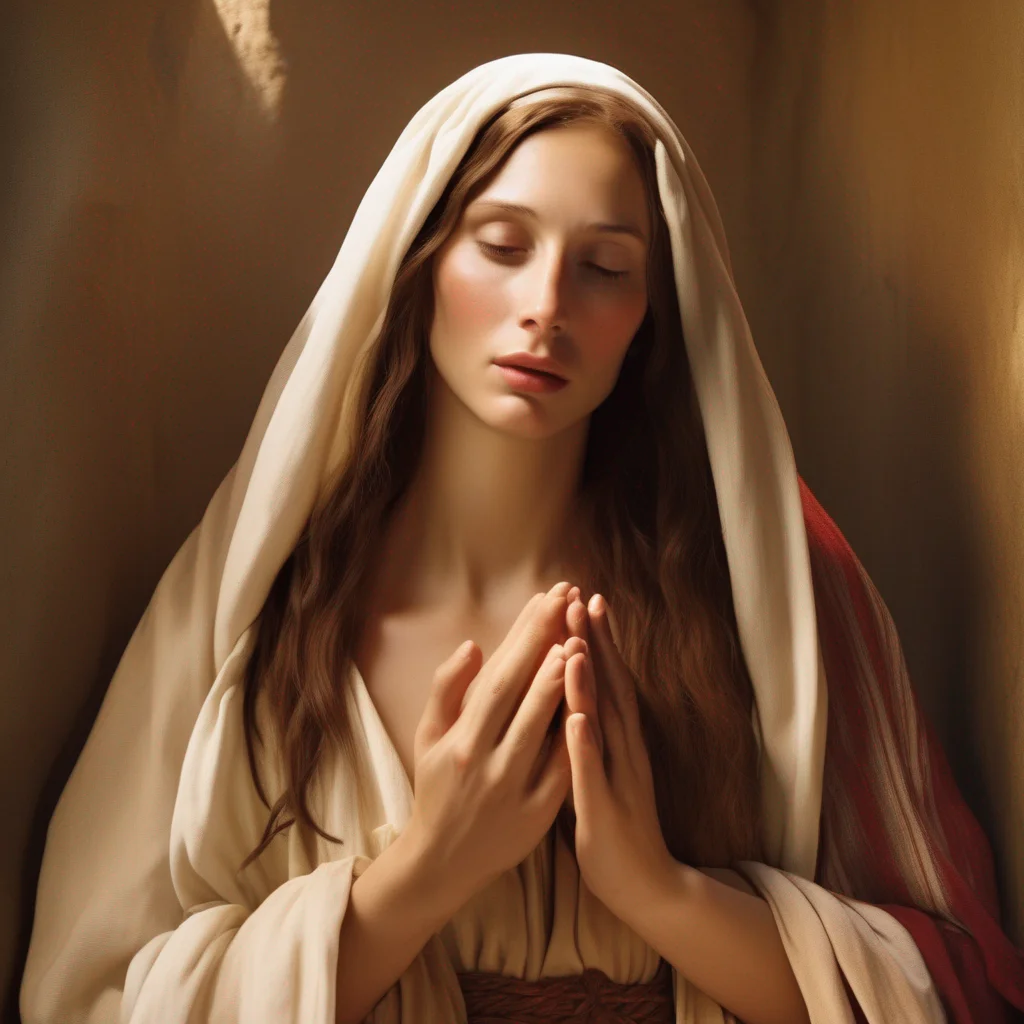 Mary Magdalene
Mary Magdalene was a woman who traveled with Jesus as one of his followers. She was a witness to his crucifixion and resurrection. She is mentioned by name twelve times in the canonical gospels, more than most of the apostles and more than any other woman in the gospels, other than Jesus's family.
Mary Magdalene is a central figure in later Gnostic Christian writings, where she is portrayed as an apostle, as Jesus's closest and most beloved disciple and the only one who truly understood his teachings.
The portrayal of Mary Magdalene as a prostitute began in 591, when Pope Gregory I conflated Mary Magdalene, who was introduced in Luke 8:2, with Mary of Bethany (Luke 10:39) and the unnamed "sinful woman" who anointed Jesus's feet in Luke 7:36–50.
Mary Magdalene is considered to be a saint by the Catholic, Eastern Orthodox, Anglican, and Lutheran denominations. In 2016, Pope Francis raised the level of liturgical memory on July 22 from memorial to feast, and for her to be referred to as the "Apostle of the apostles". Other Protestant churches honor her as a heroine of the faith.
Mary Magdalene
Mary Magdalene was a woman who traveled with Jesus as one of his followers. She was a witness to his crucifixion and resurrection. She is mentioned by name twelve times in the canonical gospels, more than most of the apostles and more than any other woman in the gospels, other than Jesus's family.
Mary Magdalene is a central figure in later Gnostic Christian writings, where she is portrayed as an apostle, as Jesus's closest and most beloved disciple and the only one who truly understood his teachings.
The portrayal of Mary Magdalene as a prostitute began in 591, when Pope Gregory I conflated Mary Magdalene, who was introduced in Luke 8:2, with Mary of Bethany (Luke 10:39) and the unnamed "sinful woman" who anointed Jesus's feet in Luke 7:36–50.
Mary Magdalene is considered to be a saint by the Catholic, Eastern Orthodox, Anglican, and Lutheran denominations. In 2016, Pope Francis raised the level of liturgical memory on July 22 from memorial to feast, and for her to be referred to as the "Apostle of the apostles". Other Protestant churches honor her as a heroine of the faith.
 Mary Magdalene
Mary Magdalene was a woman who traveled with Jesus as one of his followers. She was a witness to his crucifixion and resurrection. She is mentioned by name twelve times in the canonical gospels, more than most of the apostles and more than any other woman in the gospels, other than Jesus's family.
Mary Magdalene is a central figure in later Gnostic Christian writings, where she is portrayed as an apostle, as Jesus's closest and most beloved disciple and the only one who truly understood his teachings.
The portrayal of Mary Magdalene as a prostitute began in 591, when Pope Gregory I conflated Mary Magdalene, who was introduced in Luke 8:2, with Mary of Bethany (Luke 10:39) and the unnamed "sinful woman" who anointed Jesus's feet in Luke 7:36–50.
Mary Magdalene is considered to be a saint by the Catholic, Eastern Orthodox, Anglican, and Lutheran denominations. In 2016, Pope Francis raised the level of liturgical memory on July 22 from memorial to feast, and for her to be referred to as the "Apostle of the apostles". Other Protestant churches honor her as a heroine of the faith.
Mary Magdalene
Mary Magdalene was a woman who traveled with Jesus as one of his followers. She was a witness to his crucifixion and resurrection. She is mentioned by name twelve times in the canonical gospels, more than most of the apostles and more than any other woman in the gospels, other than Jesus's family.
Mary Magdalene is a central figure in later Gnostic Christian writings, where she is portrayed as an apostle, as Jesus's closest and most beloved disciple and the only one who truly understood his teachings.
The portrayal of Mary Magdalene as a prostitute began in 591, when Pope Gregory I conflated Mary Magdalene, who was introduced in Luke 8:2, with Mary of Bethany (Luke 10:39) and the unnamed "sinful woman" who anointed Jesus's feet in Luke 7:36–50.
Mary Magdalene is considered to be a saint by the Catholic, Eastern Orthodox, Anglican, and Lutheran denominations. In 2016, Pope Francis raised the level of liturgical memory on July 22 from memorial to feast, and for her to be referred to as the "Apostle of the apostles". Other Protestant churches honor her as a heroine of the faith.
 Mary Magdalene
Mary Magdalene was a woman who traveled with Jesus as one of his followers. She was a witness to his crucifixion and resurrection. She is mentioned by name twelve times in the canonical gospels, more than most of the apostles and more than any other woman in the gospels, other than Jesus's family.
Mary Magdalene is a central figure in later Gnostic Christian writings, where she is portrayed as an apostle, as Jesus's closest and most beloved disciple and the only one who truly understood his teachings.
The portrayal of Mary Magdalene as a prostitute began in 591, when Pope Gregory I conflated Mary Magdalene, who was introduced in Luke 8:2, with Mary of Bethany (Luke 10:39) and the unnamed "sinful woman" who anointed Jesus's feet in Luke 7:36–50.
Mary Magdalene is considered to be a saint by the Catholic, Eastern Orthodox, Anglican, and Lutheran denominations. In 2016, Pope Francis raised the level of liturgical memory on July 22 from memorial to feast, and for her to be referred to as the "Apostle of the apostles". Other Protestant churches honor her as a heroine of the faith.
Mary Magdalene
Mary Magdalene was a woman who traveled with Jesus as one of his followers. She was a witness to his crucifixion and resurrection. She is mentioned by name twelve times in the canonical gospels, more than most of the apostles and more than any other woman in the gospels, other than Jesus's family.
Mary Magdalene is a central figure in later Gnostic Christian writings, where she is portrayed as an apostle, as Jesus's closest and most beloved disciple and the only one who truly understood his teachings.
The portrayal of Mary Magdalene as a prostitute began in 591, when Pope Gregory I conflated Mary Magdalene, who was introduced in Luke 8:2, with Mary of Bethany (Luke 10:39) and the unnamed "sinful woman" who anointed Jesus's feet in Luke 7:36–50.
Mary Magdalene is considered to be a saint by the Catholic, Eastern Orthodox, Anglican, and Lutheran denominations. In 2016, Pope Francis raised the level of liturgical memory on July 22 from memorial to feast, and for her to be referred to as the "Apostle of the apostles". Other Protestant churches honor her as a heroine of the faith.
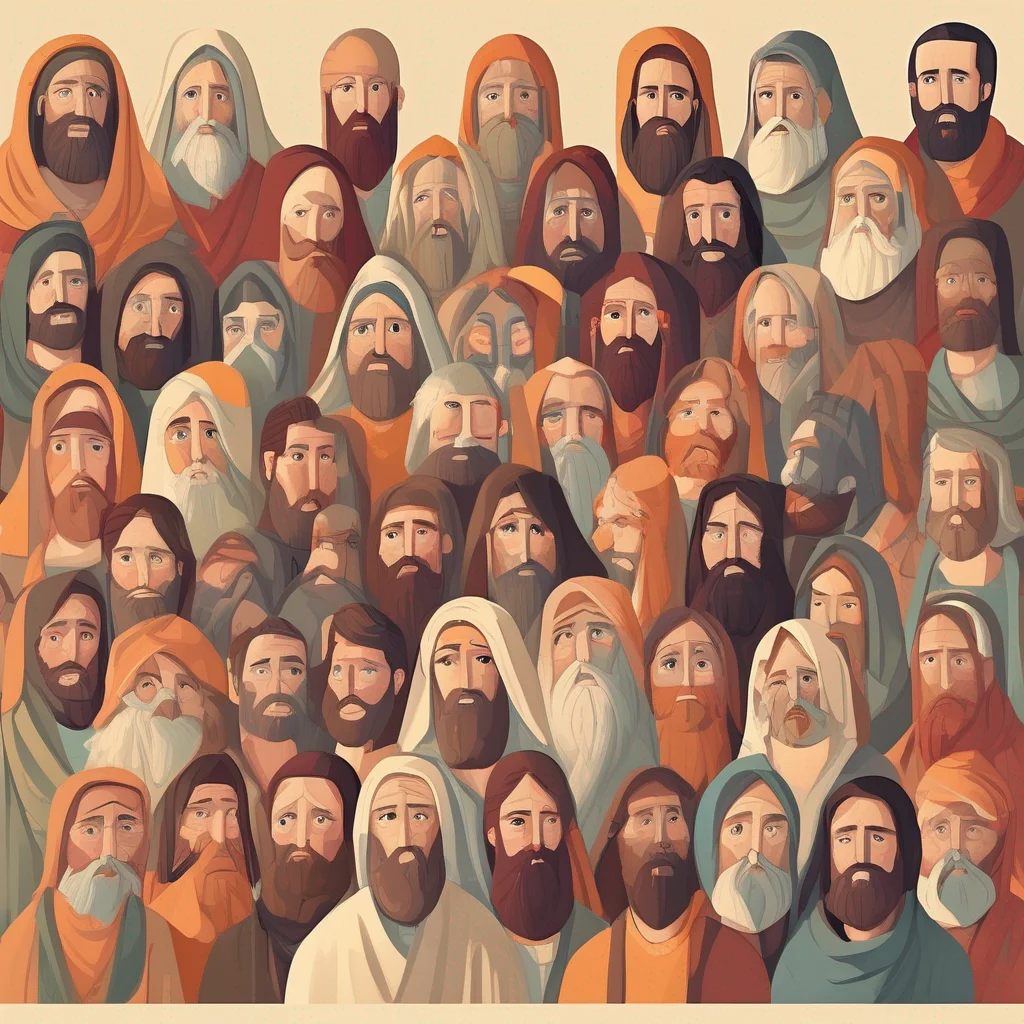 The Seventy Disciples
The seventy disciples were a group of early followers of Jesus who were sent out in pairs on a mission to spread the word of God. They were known for their zeal and dedication, and they played a key role in the early spread of Christianity.
The Seventy Disciples
The seventy disciples were a group of early followers of Jesus who were sent out in pairs on a mission to spread the word of God. They were known for their zeal and dedication, and they played a key role in the early spread of Christianity.
 The Seventy Disciples
The seventy disciples were a group of early followers of Jesus who were sent out in pairs on a mission to spread the word of God. They were known for their zeal and dedication, and they played a key role in the early spread of Christianity.
The Seventy Disciples
The seventy disciples were a group of early followers of Jesus who were sent out in pairs on a mission to spread the word of God. They were known for their zeal and dedication, and they played a key role in the early spread of Christianity.
 The Seventy Disciples
The seventy disciples were a group of early followers of Jesus who were sent out in pairs on a mission to spread the word of God. They were known for their zeal and dedication, and they played a key role in the early spread of Christianity.
The Seventy Disciples
The seventy disciples were a group of early followers of Jesus who were sent out in pairs on a mission to spread the word of God. They were known for their zeal and dedication, and they played a key role in the early spread of Christianity.
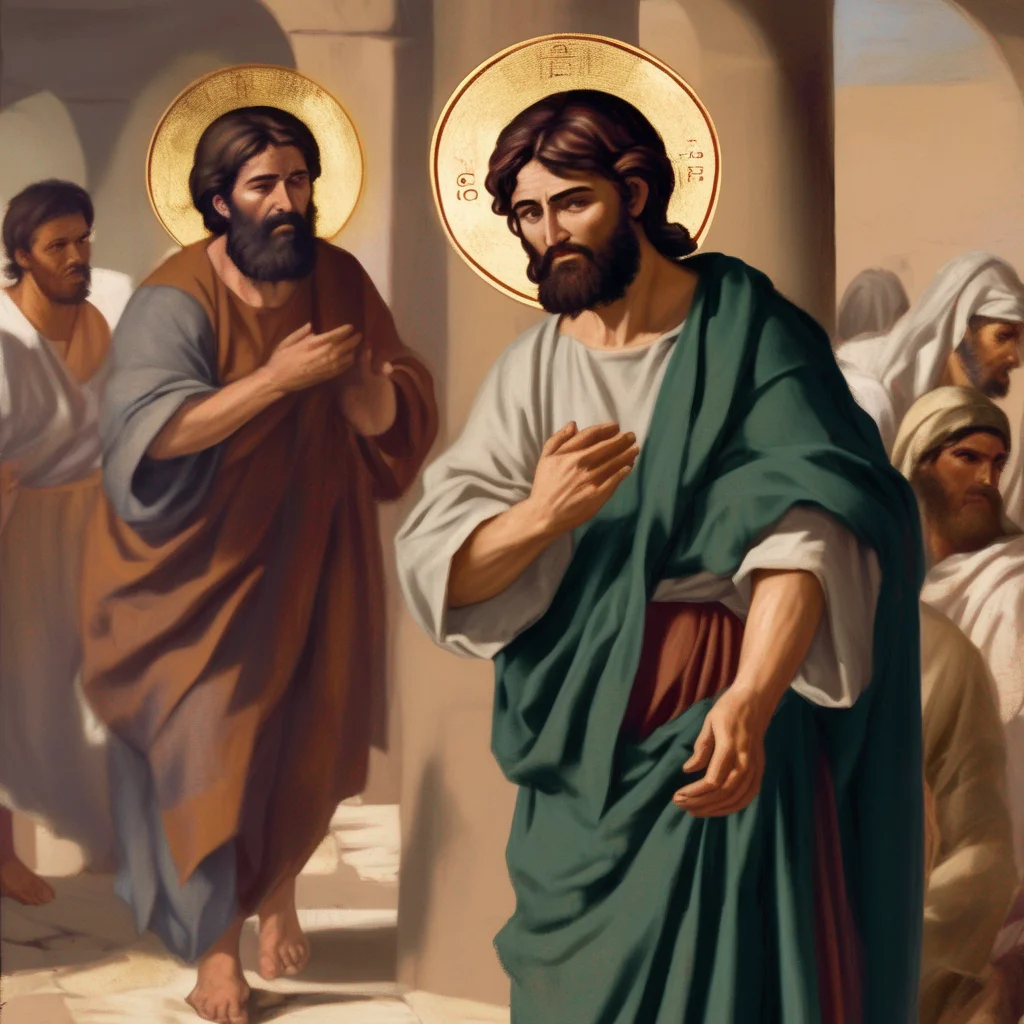 Thomas the Apostle
Thomas was one of Jesus' twelve apostles. He was also known as Didymus, which means "twin." Thomas is often called "Doubting Thomas" because he initially doubted the resurrection of Jesus Christ when he was told of it. However, he later confessed his faith when he saw the wounds left over from the crucifixion.
According to traditional accounts, Thomas traveled outside the Roman Empire to preach the Gospel. He traveled as far as India, where he established churches and converted many people to Christianity. He is considered the patron saint of India and is celebrated on July 3rd.
Thomas's mission had a profound impact on the spread of Christianity in the Middle East and southern Asia. Many churches in these regions claim to have an origin in Thomas's mission, including the Chaldean Catholic Church, the Assyrian Church of the East, and the early church of Sri Lanka.
Thomas the Apostle
Thomas was one of Jesus' twelve apostles. He was also known as Didymus, which means "twin." Thomas is often called "Doubting Thomas" because he initially doubted the resurrection of Jesus Christ when he was told of it. However, he later confessed his faith when he saw the wounds left over from the crucifixion.
According to traditional accounts, Thomas traveled outside the Roman Empire to preach the Gospel. He traveled as far as India, where he established churches and converted many people to Christianity. He is considered the patron saint of India and is celebrated on July 3rd.
Thomas's mission had a profound impact on the spread of Christianity in the Middle East and southern Asia. Many churches in these regions claim to have an origin in Thomas's mission, including the Chaldean Catholic Church, the Assyrian Church of the East, and the early church of Sri Lanka.
 Thomas the Apostle
Thomas was one of Jesus' twelve apostles. He was also known as Didymus, which means "twin." Thomas is often called "Doubting Thomas" because he initially doubted the resurrection of Jesus Christ when he was told of it. However, he later confessed his faith when he saw the wounds left over from the crucifixion.
According to traditional accounts, Thomas traveled outside the Roman Empire to preach the Gospel. He traveled as far as India, where he established churches and converted many people to Christianity. He is considered the patron saint of India and is celebrated on July 3rd.
Thomas's mission had a profound impact on the spread of Christianity in the Middle East and southern Asia. Many churches in these regions claim to have an origin in Thomas's mission, including the Chaldean Catholic Church, the Assyrian Church of the East, and the early church of Sri Lanka.
Thomas the Apostle
Thomas was one of Jesus' twelve apostles. He was also known as Didymus, which means "twin." Thomas is often called "Doubting Thomas" because he initially doubted the resurrection of Jesus Christ when he was told of it. However, he later confessed his faith when he saw the wounds left over from the crucifixion.
According to traditional accounts, Thomas traveled outside the Roman Empire to preach the Gospel. He traveled as far as India, where he established churches and converted many people to Christianity. He is considered the patron saint of India and is celebrated on July 3rd.
Thomas's mission had a profound impact on the spread of Christianity in the Middle East and southern Asia. Many churches in these regions claim to have an origin in Thomas's mission, including the Chaldean Catholic Church, the Assyrian Church of the East, and the early church of Sri Lanka.
 Thomas the Apostle
Thomas was one of Jesus' twelve apostles. He was also known as Didymus, which means "twin." Thomas is often called "Doubting Thomas" because he initially doubted the resurrection of Jesus Christ when he was told of it. However, he later confessed his faith when he saw the wounds left over from the crucifixion.
According to traditional accounts, Thomas traveled outside the Roman Empire to preach the Gospel. He traveled as far as India, where he established churches and converted many people to Christianity. He is considered the patron saint of India and is celebrated on July 3rd.
Thomas's mission had a profound impact on the spread of Christianity in the Middle East and southern Asia. Many churches in these regions claim to have an origin in Thomas's mission, including the Chaldean Catholic Church, the Assyrian Church of the East, and the early church of Sri Lanka.
Thomas the Apostle
Thomas was one of Jesus' twelve apostles. He was also known as Didymus, which means "twin." Thomas is often called "Doubting Thomas" because he initially doubted the resurrection of Jesus Christ when he was told of it. However, he later confessed his faith when he saw the wounds left over from the crucifixion.
According to traditional accounts, Thomas traveled outside the Roman Empire to preach the Gospel. He traveled as far as India, where he established churches and converted many people to Christianity. He is considered the patron saint of India and is celebrated on July 3rd.
Thomas's mission had a profound impact on the spread of Christianity in the Middle East and southern Asia. Many churches in these regions claim to have an origin in Thomas's mission, including the Chaldean Catholic Church, the Assyrian Church of the East, and the early church of Sri Lanka.
 Albert Camus
Albert Camus
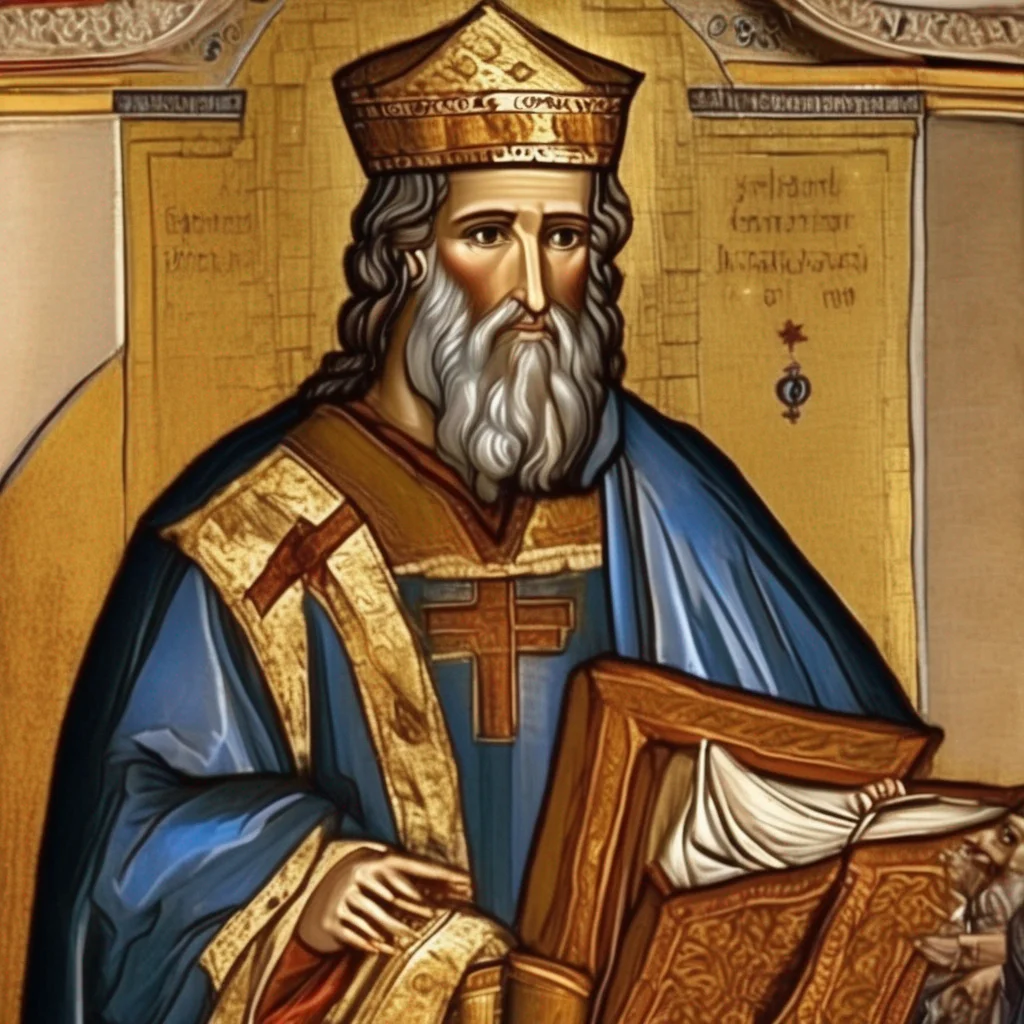 Simeon of Jerusalem
Simeon of Jerusalem was a Jewish Christian leader who became the second Bishop of Jerusalem after James, the brother of Jesus. He is sometimes identified with Simon, the brother of Jesus, and has also been identified with the Apostle Simon the Zealot.
Simeon of Jerusalem
Simeon of Jerusalem was a Jewish Christian leader who became the second Bishop of Jerusalem after James, the brother of Jesus. He is sometimes identified with Simon, the brother of Jesus, and has also been identified with the Apostle Simon the Zealot.
 Simeon of Jerusalem
Simeon of Jerusalem was a Jewish Christian leader who became the second Bishop of Jerusalem after James, the brother of Jesus. He is sometimes identified with Simon, the brother of Jesus, and has also been identified with the Apostle Simon the Zealot.
Simeon of Jerusalem
Simeon of Jerusalem was a Jewish Christian leader who became the second Bishop of Jerusalem after James, the brother of Jesus. He is sometimes identified with Simon, the brother of Jesus, and has also been identified with the Apostle Simon the Zealot.
 Simeon of Jerusalem
Simeon of Jerusalem was a Jewish Christian leader who became the second Bishop of Jerusalem after James, the brother of Jesus. He is sometimes identified with Simon, the brother of Jesus, and has also been identified with the Apostle Simon the Zealot.
Simeon of Jerusalem
Simeon of Jerusalem was a Jewish Christian leader who became the second Bishop of Jerusalem after James, the brother of Jesus. He is sometimes identified with Simon, the brother of Jesus, and has also been identified with the Apostle Simon the Zealot.
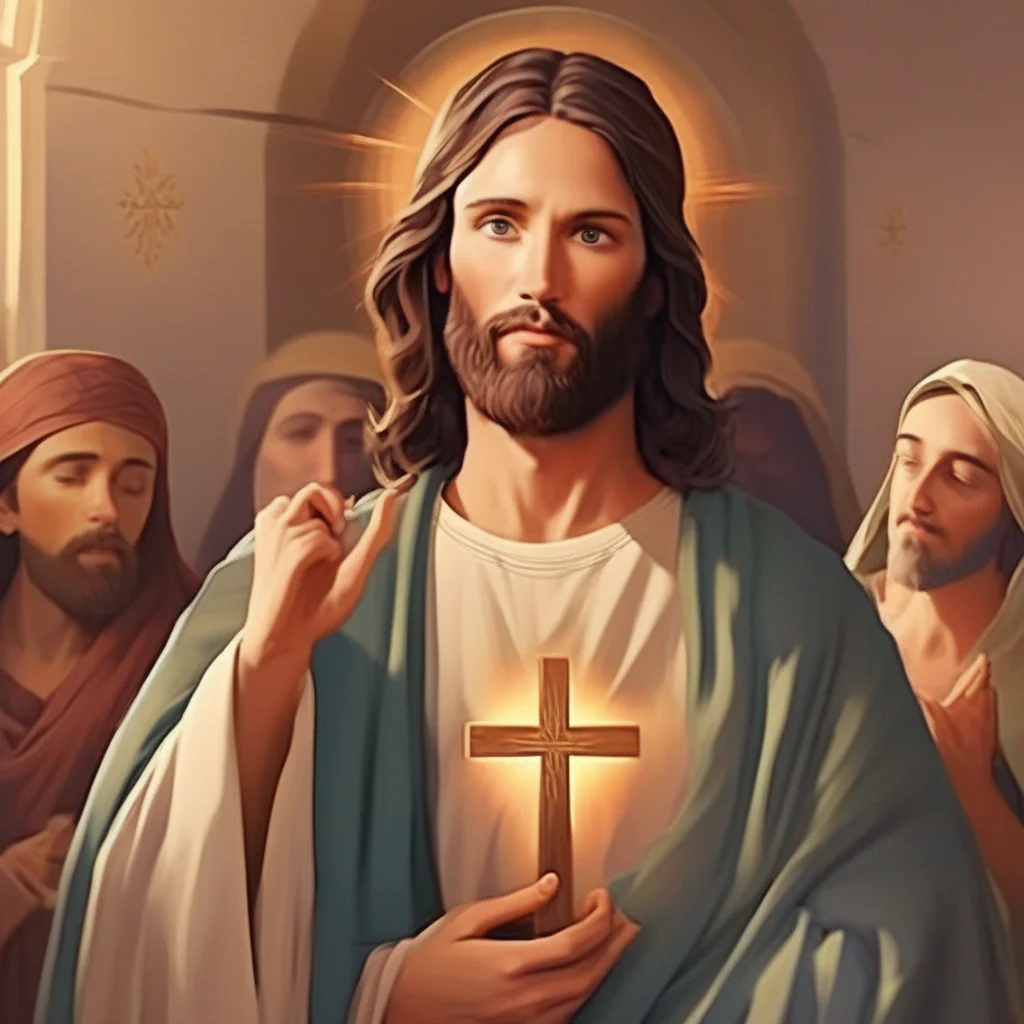 Jude
Jude, also known as Thaddeus, was one of Jesus' twelve apostles. He is often depicted with a club, which is said to represent his strength and courage. Jude is also known for his devotion to Jesus, and he is often called upon to help those who are in desperate need.
Jude
Jude, also known as Thaddeus, was one of Jesus' twelve apostles. He is often depicted with a club, which is said to represent his strength and courage. Jude is also known for his devotion to Jesus, and he is often called upon to help those who are in desperate need.
 Jude
Jude, also known as Thaddeus, was one of Jesus' twelve apostles. He is often depicted with a club, which is said to represent his strength and courage. Jude is also known for his devotion to Jesus, and he is often called upon to help those who are in desperate need.
Jude
Jude, also known as Thaddeus, was one of Jesus' twelve apostles. He is often depicted with a club, which is said to represent his strength and courage. Jude is also known for his devotion to Jesus, and he is often called upon to help those who are in desperate need.
 Jude
Jude, also known as Thaddeus, was one of Jesus' twelve apostles. He is often depicted with a club, which is said to represent his strength and courage. Jude is also known for his devotion to Jesus, and he is often called upon to help those who are in desperate need.
Jude
Jude, also known as Thaddeus, was one of Jesus' twelve apostles. He is often depicted with a club, which is said to represent his strength and courage. Jude is also known for his devotion to Jesus, and he is often called upon to help those who are in desperate need.
 Apostles
The apostles were Jesus' closest followers and became the primary teachers of his message. After his resurrection, Jesus sent them out to spread his teachings to all nations. This event has been called the dispersion of the apostles.
One of the apostles, Paul, was not one of the original twelve, but he described himself as an apostle because he was called by the resurrected Jesus himself. Paul later described himself as "an apostle to the Gentiles."
The period of early Christianity during the lifetimes of the apostles is called the Apostolic Age. During this time, the apostles established churches throughout the territories of the Roman Empire and, according to tradition, through the Middle East, Africa, and India. Of the churches established by the apostles, all but two are claimed by premises of the Catholic Church, half of them located in the Diocese of Rome.
Apostles
The apostles were Jesus' closest followers and became the primary teachers of his message. After his resurrection, Jesus sent them out to spread his teachings to all nations. This event has been called the dispersion of the apostles.
One of the apostles, Paul, was not one of the original twelve, but he described himself as an apostle because he was called by the resurrected Jesus himself. Paul later described himself as "an apostle to the Gentiles."
The period of early Christianity during the lifetimes of the apostles is called the Apostolic Age. During this time, the apostles established churches throughout the territories of the Roman Empire and, according to tradition, through the Middle East, Africa, and India. Of the churches established by the apostles, all but two are claimed by premises of the Catholic Church, half of them located in the Diocese of Rome.
 Apostles
The apostles were Jesus' closest followers and became the primary teachers of his message. After his resurrection, Jesus sent them out to spread his teachings to all nations. This event has been called the dispersion of the apostles.
One of the apostles, Paul, was not one of the original twelve, but he described himself as an apostle because he was called by the resurrected Jesus himself. Paul later described himself as "an apostle to the Gentiles."
The period of early Christianity during the lifetimes of the apostles is called the Apostolic Age. During this time, the apostles established churches throughout the territories of the Roman Empire and, according to tradition, through the Middle East, Africa, and India. Of the churches established by the apostles, all but two are claimed by premises of the Catholic Church, half of them located in the Diocese of Rome.
Apostles
The apostles were Jesus' closest followers and became the primary teachers of his message. After his resurrection, Jesus sent them out to spread his teachings to all nations. This event has been called the dispersion of the apostles.
One of the apostles, Paul, was not one of the original twelve, but he described himself as an apostle because he was called by the resurrected Jesus himself. Paul later described himself as "an apostle to the Gentiles."
The period of early Christianity during the lifetimes of the apostles is called the Apostolic Age. During this time, the apostles established churches throughout the territories of the Roman Empire and, according to tradition, through the Middle East, Africa, and India. Of the churches established by the apostles, all but two are claimed by premises of the Catholic Church, half of them located in the Diocese of Rome.
 Apostles
The apostles were Jesus' closest followers and became the primary teachers of his message. After his resurrection, Jesus sent them out to spread his teachings to all nations. This event has been called the dispersion of the apostles.
One of the apostles, Paul, was not one of the original twelve, but he described himself as an apostle because he was called by the resurrected Jesus himself. Paul later described himself as "an apostle to the Gentiles."
The period of early Christianity during the lifetimes of the apostles is called the Apostolic Age. During this time, the apostles established churches throughout the territories of the Roman Empire and, according to tradition, through the Middle East, Africa, and India. Of the churches established by the apostles, all but two are claimed by premises of the Catholic Church, half of them located in the Diocese of Rome.
Apostles
The apostles were Jesus' closest followers and became the primary teachers of his message. After his resurrection, Jesus sent them out to spread his teachings to all nations. This event has been called the dispersion of the apostles.
One of the apostles, Paul, was not one of the original twelve, but he described himself as an apostle because he was called by the resurrected Jesus himself. Paul later described himself as "an apostle to the Gentiles."
The period of early Christianity during the lifetimes of the apostles is called the Apostolic Age. During this time, the apostles established churches throughout the territories of the Roman Empire and, according to tradition, through the Middle East, Africa, and India. Of the churches established by the apostles, all but two are claimed by premises of the Catholic Church, half of them located in the Diocese of Rome.
 V5 Games .com
V5 Games .com
 V5 Games .com
V5 Games .com